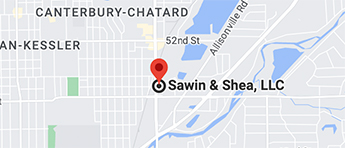If you’ve ever asked a family member or friend to cosign a loan, it seems like a standard agreement until you consider the risks they are taking on your behalf. Filing for bankruptcy could also have consequences for your cosigner. If you consider filing, an experienced bankruptcy attorney can help you decide what type of bankruptcy is right for you (Chapter 7 or Chapter 13) and how to protect a cosigner from your creditors.
What is a Cosigner?
When you ask someone to cosign a loan for you, it is far more involved than a simple character reference. The lender doubts your ability to repay what is owed. It can be due to bad credit, a lack of borrowing history or absence of collateral. The creditor is asking the cosigner to take responsibility for repayment if you default. In addition to you, they are accountable for every monthly payment, late fee and collection charge. If you miss a payment, the lender reflects it on their credit report as well as yours. Cosigning threatens their financial status if you do not re-pay your loan.
What is the Difference Between a Cosigner and Guarantor?
A cosigner is held responsible for payments throughout the life of a loan. A guarantor is liable for the full amount if you default on the loan or the lease.
Can Creditors Pursue My Cosigner for Payment?
Yes. If you file for Chapter 7 bankruptcy, only you are protected under the automatic stay rule and the cosigner is not. A creditor can go after them for the full amount (as well as any missed payments) during and after your Chapter 7 case. You have a better chance of shielding them from creditors if you include the loan as part of a Chapter 13 repayment plan. The resolution of a Chapter 13 case takes three to five years and the co-debtor stay can protect a cosigner/guarantor from collection efforts during the term of the Chapter 13. An experienced bankrutpcy attorney can discuss our options relating to protecting cosigners and guarantors during bankruptcy.
Are There Options to Protect My Cosigner After My Discharge?
Your bankruptcy discharge will absolve you of the debt but not the cosigner. You have these choices that would spare them from assuming your debt:
1) Reaffirm the Debt – Before your Chapter 13 bankruptcy case finishes, re-secure the loan. It means you alone are willing to pay it in full. The debt does not get discharged at the end of the case. It is a hard choice but does shield your cosigner. If you choose this option, seriously commit to maintain current loan payments
2) Pay off the Debt – After your discharge, volunteer to pay off the loan in full by negotiating a payment plan directly with the creditor. This is an option to consider, although it may not be possible depending on your financial status following bankruptcy. A bankruptcy attorney can list the pros and cons of this action.
3) Consider a Chapter 13 – A Chapter 13 Plan can, in many cases, be configured to pay a cosigned or guaranteed debt in full to protect the cosigner or guarantor.
Sawin & Shea – Indianapolis Bankruptcy Attorneys
You never intend for your cosigner to be responsible for repaying your loan. Help protect them from creditor harassment by turning to the Indiana bankruptcy attorneys at Sawin & Shea for help. We are specialists in bankruptcy procedures. Please do not hesitate to call us today at 317-759-1483 or send an email for a free consultation. We are ready to help.



